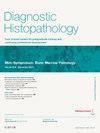Death by hanging: examination of autopsy findings and best approach to the post-mortem examination – an update
引用次数: 0
Abstract
Hanging is a form of death caused by constriction of the neck by a ligature, where the force is derived from the gravitational drag of the victim's body weight. Hanging deaths are becoming increasingly important to pathologists. Injuries play a decisive role in determining the manner of death, particularly if doubt exists as to whether the cause is suicidal, accidental or by homicide. There are no standards specifically directed at post-mortem examination in cases of fatal hanging, but general autopsy guidelines are published by the Royal College of Pathologists and are applicable to deaths by this means. While the incidence of external injuries in hanging is consistent across the literature, significant variation exists regarding the presence of internal injuries. Since publication of the original version of this article, several papers have been published. This paper aims to remind the reader of the original article and to discuss relevant literature published since 2019. There are differences to the autopsy approach of victims of hanging across the United Kingdom, but full external and internal examination with focused neck dissection remains best practice despite the widespread use of post-mortem computed tomography (PMCT). Auditing of pathologists' practices may help improve the standards of post-mortem examination and subsequent reporting and clarify uncertainty regarding internal injuries.
求助全文
约1分钟内获得全文
求助全文
来源期刊

Diagnostic Histopathology
Medicine-Pathology and Forensic Medicine
CiteScore
1.30
自引率
0.00%
发文量
64
期刊介绍:
This monthly review journal aims to provide the practising diagnostic pathologist and trainee pathologist with up-to-date reviews on histopathology and cytology and related technical advances. Each issue contains invited articles on a variety of topics from experts in the field and includes a mini-symposium exploring one subject in greater depth. Articles consist of system-based, disease-based reviews and advances in technology. They update the readers on day-to-day diagnostic work and keep them informed of important new developments. An additional feature is the short section devoted to hypotheses; these have been refereed. There is also a correspondence section.
 求助内容:
求助内容: 应助结果提醒方式:
应助结果提醒方式:


